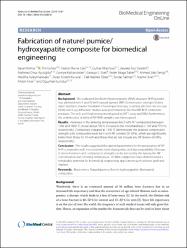| dc.contributor.author | Komur, Baran | en_US |
| dc.contributor.author | Lohse, Tim | en_US |
| dc.contributor.author | Can, Hatice Merve | en_US |
| dc.contributor.author | Khalilova, Gulnar | en_US |
| dc.contributor.author | Geçimli, Zeynep Nur | en_US |
| dc.contributor.author | Aydoğdu, Mehmet Onur | en_US |
| dc.contributor.author | Kalkandelen, Cevriye | en_US |
| dc.contributor.author | Stan, George E. | en_US |
| dc.contributor.author | Şahin, Yeşim Müge | en_US |
| dc.contributor.author | Sengil, Ahmed Zeki | en_US |
| dc.contributor.author | Süleymanoğlu, Mediha | en_US |
| dc.contributor.author | Erdem Kuruca, Serap | en_US |
| dc.contributor.author | Oktar, Faik Nuzhet | en_US |
| dc.contributor.author | Salman, Serdar | en_US |
| dc.contributor.author | Ekren, Nazmi | en_US |
| dc.contributor.author | Ficai, Anton | en_US |
| dc.contributor.author | Gunduz, Oguzhan | en_US |
| dc.date.accessioned | 2017-07-06T08:14:39Z | |
| dc.date.available | 2017-07-06T08:14:39Z | |
| dc.date.issued | 2016 | |
| dc.identifier.citation | Şahin, Y. M....(2016). Fabrication of naturel pumice/ hydroxyapatite composite for biomedical engineering. BioMedical Engineering Online. 15.1, 1-20. | en_US |
| dc.identifier.issn | 1475-925X | |
| dc.identifier.uri | https://hdl.handle.net/20.500.12294/840 | |
| dc.identifier.uri | http://dx.doi.org/10.1186/s12938-016-0203-0 | |
| dc.description | Şahin, Yeşim Müge (Arel Author), Geçimli, Zeynep Nur (Arel Mezun Öğrenci) | en_US |
| dc.description.abstract | Background: We evaluated the Bovine hydroxyapatite (BHA) structure. BHA powder was admixed with 5 and 10 wt% natural pumice (NP). Compression strength, Vickers micro hardness, Fourier transform infrared spectroscopy, scanning electron microscopy (SEM) and X-ray diffraction studies were performed on the final NP-BHA composite products. The cells proliferation was investigated by MTT assay and SEM. Furthermore, the antimicrobial activity of NP-BHA samples was interrogated. Results: Variances in the sintering temperature (for 5 wt% NP composites) between 1000 and 1300 °C, reveal about 700 % increase in the microhardness (~100 and 775 HV, respectively). Composites prepared at 1300 °C demonstrate the greatest compression strength with comparable result for 5 wt% NP content (87 MPa), which are significantly better than those for 10 wt% and those that do not include any NP (below 60 MPa, respectively). Conclusion: The results suggested the optimal parameters for the preparation of NPBHA composites with increased mechanical properties and biocompatibility. Changes in micro-hardness and compression strength can be tailored by the tuning the NP concentration and sintering temperature. NP-BHA composites have demonstrated a remarkable potential for biomedical engineering applications such as bone graft and implant. | en_US |
| dc.language.iso | eng | en_US |
| dc.publisher | BioMed Central | en_US |
| dc.relation.ispartof | BioMedical Engineering Online | en_US |
| dc.identifier.doi | 10.1186/s12938-016-0203-0 | en_US |
| dc.identifier.doi | 10.1186/s12938-016-0203-0 | |
| dc.rights | info:eu-repo/semantics/openAccess | en_US |
| dc.subject | Bioceramics | en_US |
| dc.subject | Natural Pumice | en_US |
| dc.subject | Bovine Hydroxyapatite | en_US |
| dc.subject | Bioinspired Composites | en_US |
| dc.title | Fabrication of naturel pumice/ hydroxyapatite composite for biomedical engineering | en_US |
| dc.type | article | en_US |
| dc.department | İstanbul Arel Üniversitesi, Mühendislik ve Mimarlık Fakültesi, Biyomedikal Mühendisliği Bölümü | en_US |
| dc.authorid | TR41996 | en_US |
| dc.identifier.volume | 15 | en_US |
| dc.identifier.issue | 1 | en_US |
| dc.identifier.startpage | 1 | en_US |
| dc.identifier.endpage | 20 | en_US |
| dc.relation.publicationcategory | Makale - Uluslararası Hakemli Dergi - Kurum Öğretim Elemanı | en_US |


















